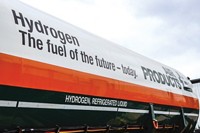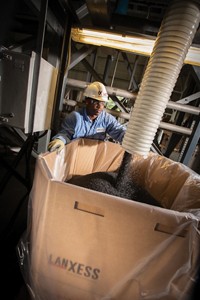Advertisement
Grab your lab coat. Let's get started
Welcome!
Welcome!
Create an account below to get 6 C&EN articles per month, receive newsletters and more - all free.
It seems this is your first time logging in online. Please enter the following information to continue.
As an ACS member you automatically get access to this site. All we need is few more details to create your reading experience.
Not you? Sign in with a different account.
Not you? Sign in with a different account.
ERROR 1
ERROR 1
ERROR 2
ERROR 2
ERROR 2
ERROR 2
ERROR 2
Password and Confirm password must match.
If you have an ACS member number, please enter it here so we can link this account to your membership. (optional)
ERROR 2
ACS values your privacy. By submitting your information, you are gaining access to C&EN and subscribing to our weekly newsletter. We use the information you provide to make your reading experience better, and we will never sell your data to third party members.
Economy
Carbon is on the minds of chemical executives
CEOs at annual meeting say they can thread the needle between growth, decarbonization
by Michael McCoy
June 9, 2022
| A version of this story appeared in
Volume 100, Issue 21
Inflation, supply chain stress, and the war in Ukraine were just some of the urgent problems on the minds of executives at the annual meeting of the American Chemistry Council (ACC), held June 6–8 in Colorado Springs.
Forecast
4.1%
Expected increase in US chemical production in 2022
2.4%
Expected increase in US chemical production in 2023
Source: American Chemistry Council.
But lurking in the background was the much longer-term problem of shrinking the carbon footprint of the energy-intensive chemical industry. Many of the companies in attendance aim to be net-zero carbon dioxide emitters by 2050.
The pressure they feel is real. Over 70% of consumers worldwide think that climate change is an emergency, according to a May 2022 survey by the accounting and consulting firm Deloitte. And investment funds that specialize in companies with good environmental, social, and governance credentials are growing in popularity. Companies that fail to lower emissions risk the wrath of consumers and investors alike.
Executives at the conference expressed confidence that they will get to net zero while continuing to grow—provided governments offer the right incentives. “If policies are right, we will decarbonize by 2050 and more than double production,” Dow CEO Jim Fitterling declared at a press conference during the event.
Policies aren’t yet right in the US, according to Fitterling. Dow announced plans last year for a zero-carbon ethylene cracker in Alberta because the Canadian province puts a price on carbon and has a pipeline in place for capturing and sequestering by-product CO₂. Dow will heat the cracker with hydrogen made from hydrocarbons and capture the concentrated stream of CO₂ that results.
That’s not to say US officials are doing nothing. On June 6, the US Department of Energy announced that it would fund an $8 billion program to develop regional hubs that produce so-called green hydrogen by splitting water using energy from renewable sources and nuclear power. And Fitterling pointed out that the bipartisan infrastructure bill calls for up to eight carbon-capture hubs across the country. Situated in the right places, he said, such hubs could help decarbonize 85% of the chemical industry.
Green hydrogen and blue hydrogen made conventionally but with carbon capture are 2 of 15 routes that Deloitte has identified for greenhouse gas abatement in the chemical industry. Only one of them—efficiency improvement—is both technologically mature and being implemented at commercial scale, said Robert Kumpf, a materials science specialist at Deloitte. Blue hydrogen is mature but not fully commercial, and green hydrogen is neither mature nor commercial, Deloitte’s analysis concludes.
Two ambitious industrial projects aim to make blue hydrogen commercial. The oil companies ExxonMobil and BP have proposed building hubs in the Houston area that would accept CO₂ emissions from local industry and sequester them underground. Both projects also would make blue hydrogen for sale or use in chemical production.
Downstream from petrochemical companies like Dow and ExxonMobil, specialty chemical makers see themselves playing a different role in decarbonization. CEO Guillermo Novo said Ashland is improving the carbon footprint of its synthetic chemical operations. But over 60% of the firm’s products are natural, naturally derived, or biodegradable, Novo said. Thus, he sees Ashland’s contribution as focused more on innovative new products, such as biodegradable materials made from natural feedstocks.
Not surprisingly, executives didn’t favor shrinking the sector’s industrial footprint as a means of reducing its carbon footprint. Indeed, ACC CEO Chris Jahn said investment in new US plants that take advantage of inexpensive natural gas extracted from shale now tops $200 billion. And Martha Moore, the association’s chief economist, released a midyear outlook report that predicts growth of 4.1% in US chemical production this year and 2.4% in 2023.
Rather, they expressed confidence that growth and sustainability will go hand in hand. Moore reported that about 25% of the industry’s capital spending is going toward sustainability improvement. Fitterling said the figure at Dow is closer to one-third.
Karen McKee, CEO of ExxonMobil Chemical, summed up the industry’s view of the future at the press conference: “We have a lot of confidence in growth, and that’s underpinned by the role of our products in modern life and the role of our products in a lower-emissions future.”




Join the conversation
Contact the reporter
Submit a Letter to the Editor for publication
Engage with us on Twitter